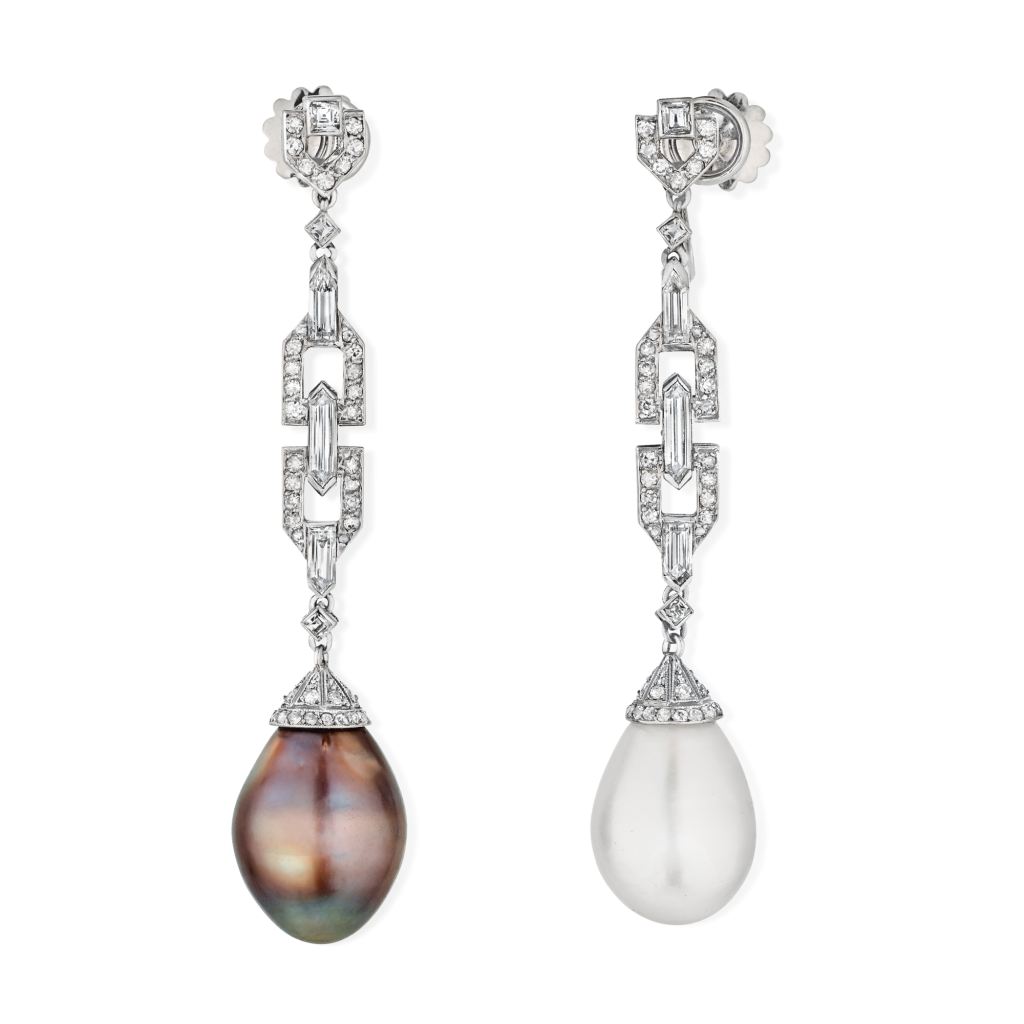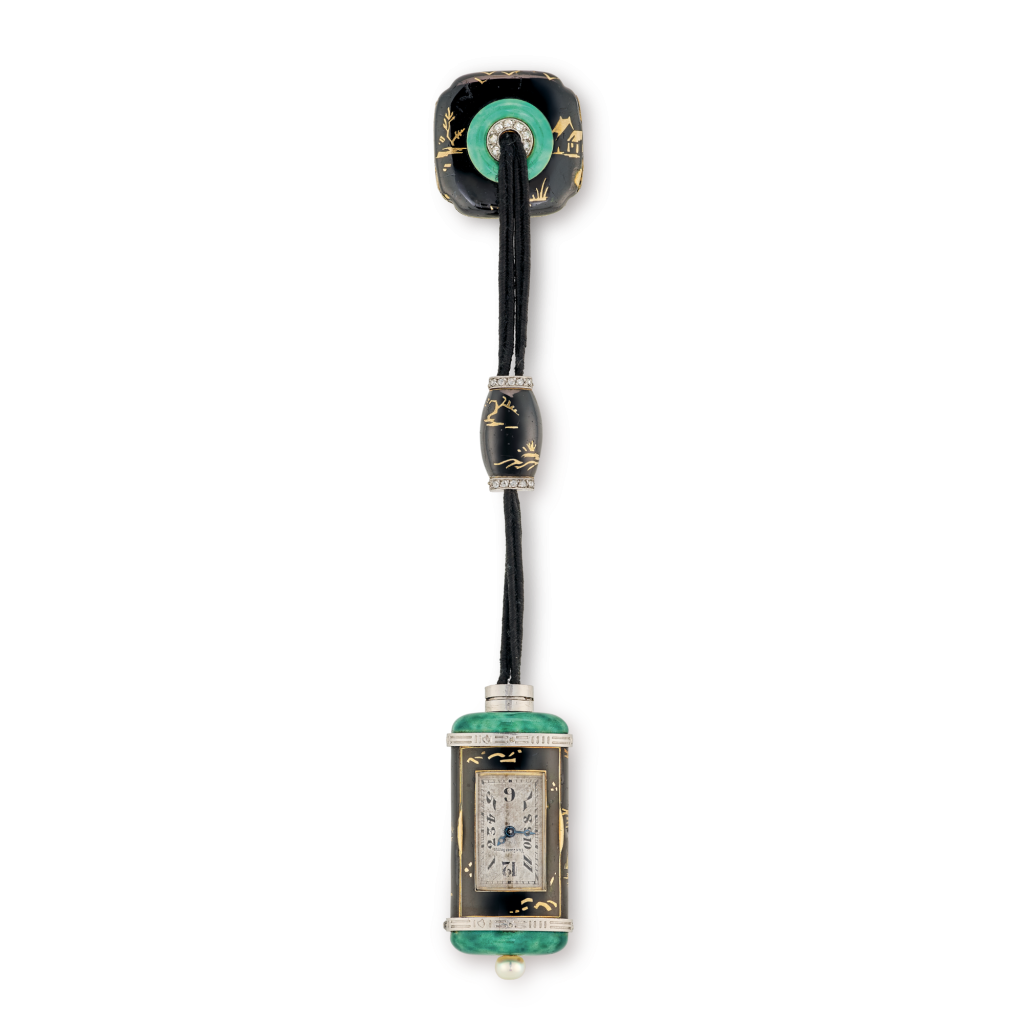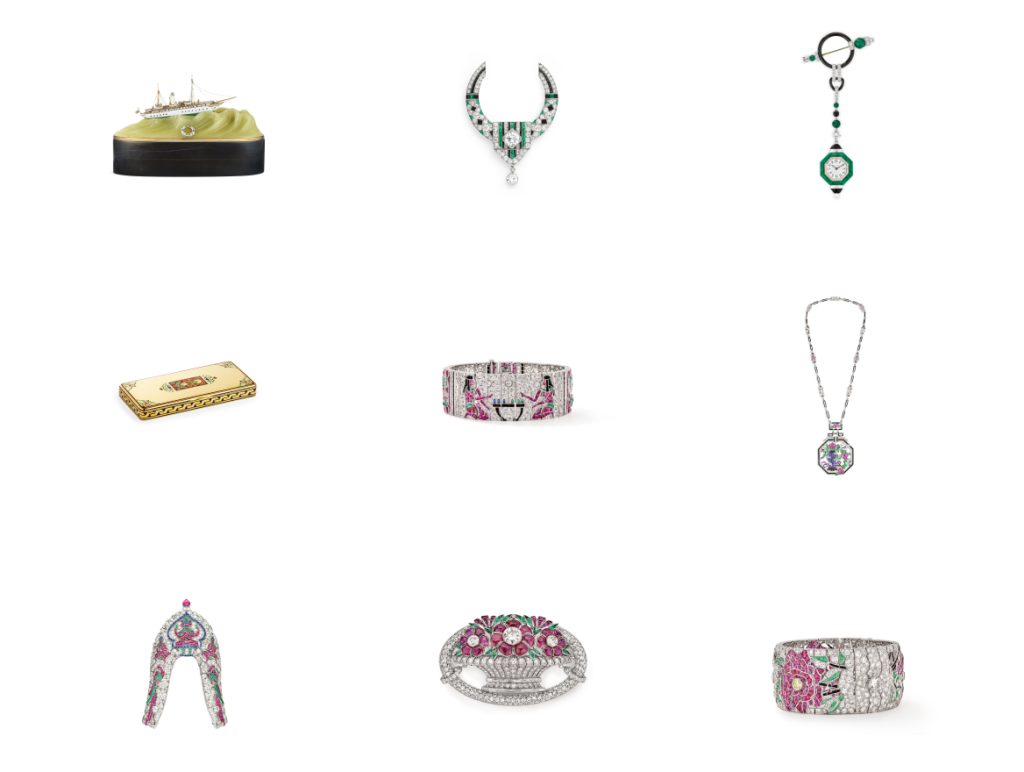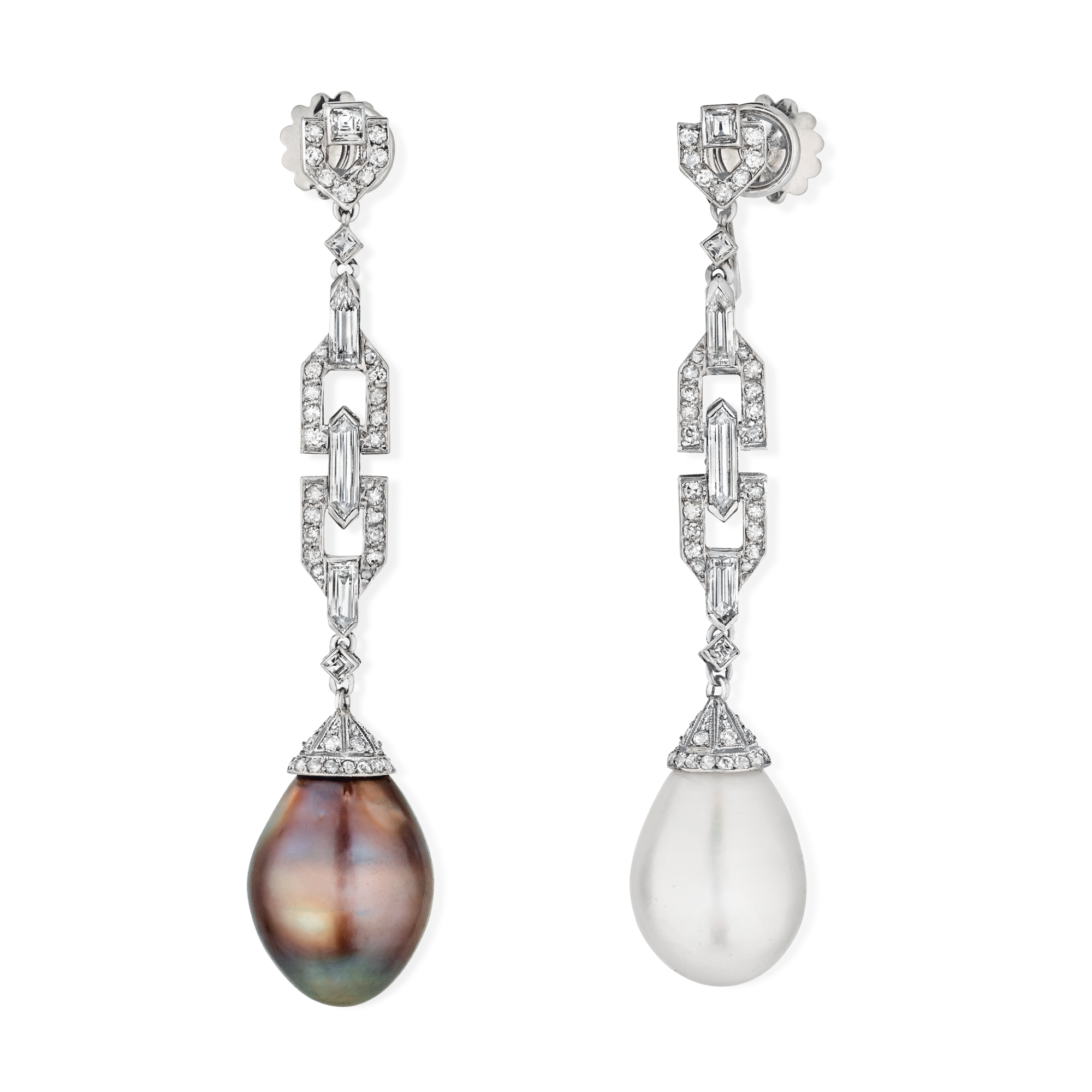
Pampilles earrings
Creation details
- Creation year 1924
- Stone Diamond
- Stone Pearl
- Material Platinum
- Usage Earrings
- Dimensions 58 mm
At the turn of the twentieth century, pearls were as sought after as gemstones, if not more so, and appealed greatly to “a large community of craftsmen and artists.”1G. Edmond-Lafon, “Les grandes industries du luxe au royaume de la perle,” Excelsior (6 October 1923): n.p. The use of two different colored pearls, one white, the other black, makes this pair of earrings particularly special…
The two pearls are topped by a conical element composed of triangles of platinum and diamonds. A square diamond joins them to a series of links set alternately with brilliants and calibrated diamonds. A second square diamond in turn joins these to a half link that conceals the fastening system.
Reuse and transformation of old jewelry
The black pearl had previously been used in a pendant created in July 1923. This had subsequently been taken apart to reuse its precious materials. Examples of reusing materials in this way are far from unique: the Van Cleef & Arpels Archives reveal a pronounced taste for “pampilles” earrings decorated with pearls, frequently made from transforming older pieces of jewelry.
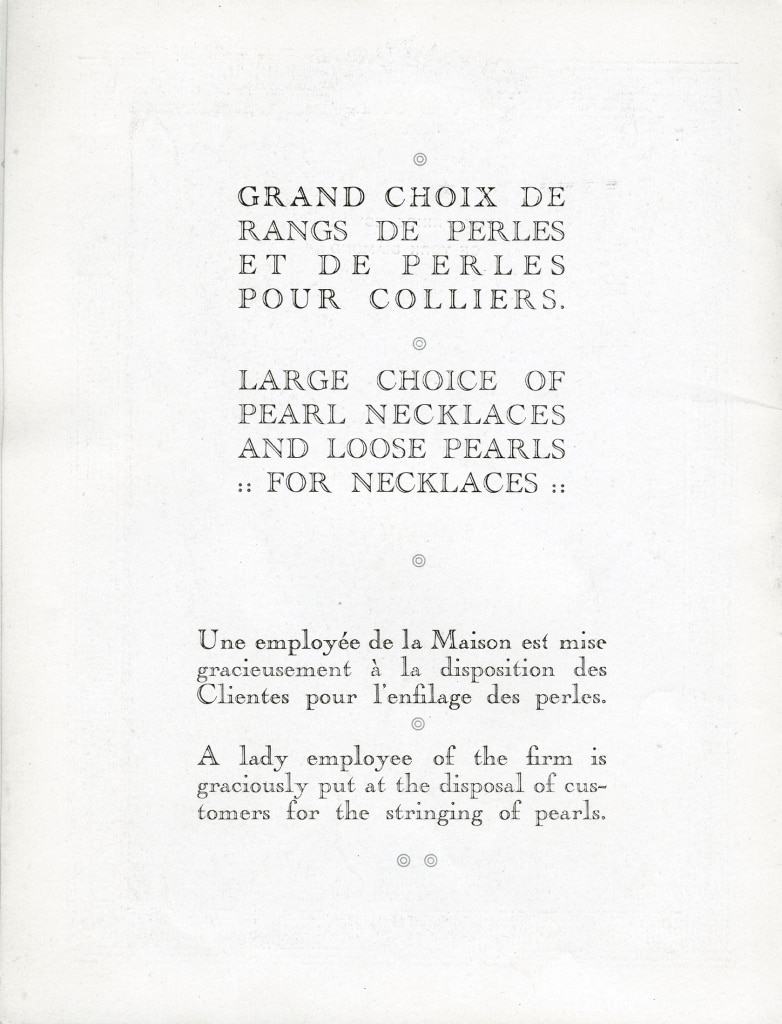
Pearl fishing
The difficulties of pearl fishing, together with its low yield, make this organic material as precious as gemstones. While the Arabian Gulf, from the second half of the nineteenth century, was one of the most important regions for white pearl fishing, “Tahiti […] nurtured the world market in so-called black pearls.” Processing pearls entails many different stages: scraping “improves the color and shape”; “drying […] stimulates its whitening process”; piercing precedes the mounting and setting, “the domain in which our jewelers practice their art.”2G. Edmond-Lafon, “Les grandes industries du luxe au royaume de la perle,” Excelsior (6 October 1923): n.p.
The role of advertising
In addition to their use in Van Cleef & Arpels’ jewelry creations at that time, the Maison’s advertisements also featured female models wearing multiple rows of pearls, while the catalogs introduced “a wide choice […] of pearls for necklaces.” These earrings illustrate a thriving pearl industry, as well as the emergence of the Art Deco style and its geometric compositions.
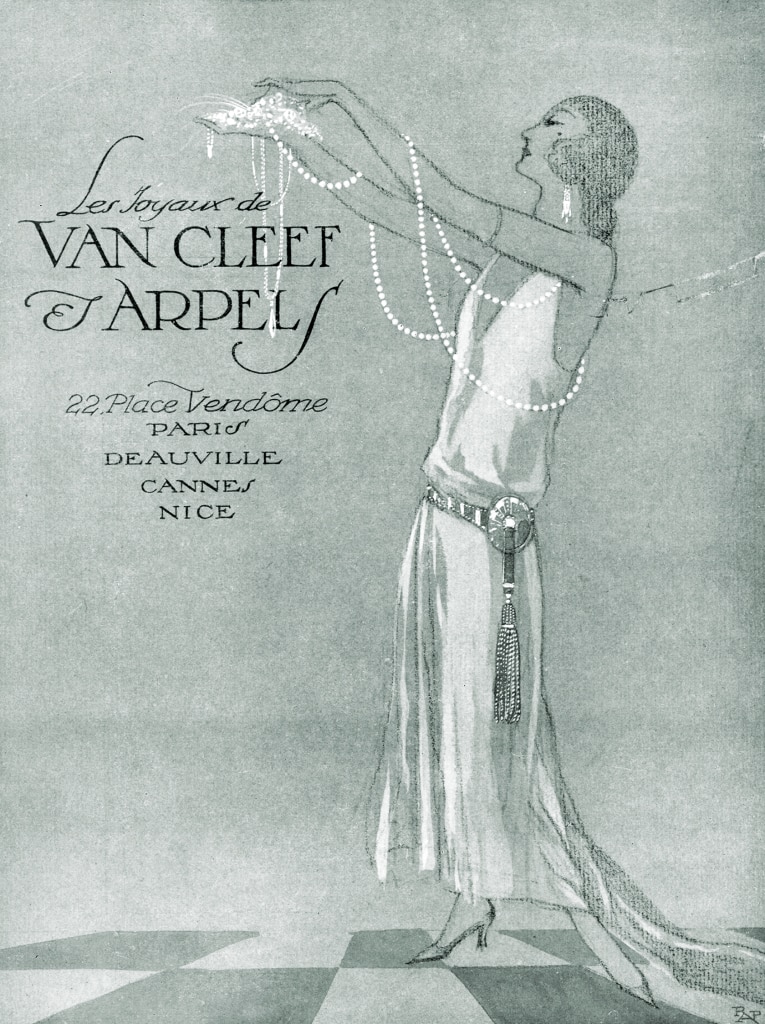
To go deeper
